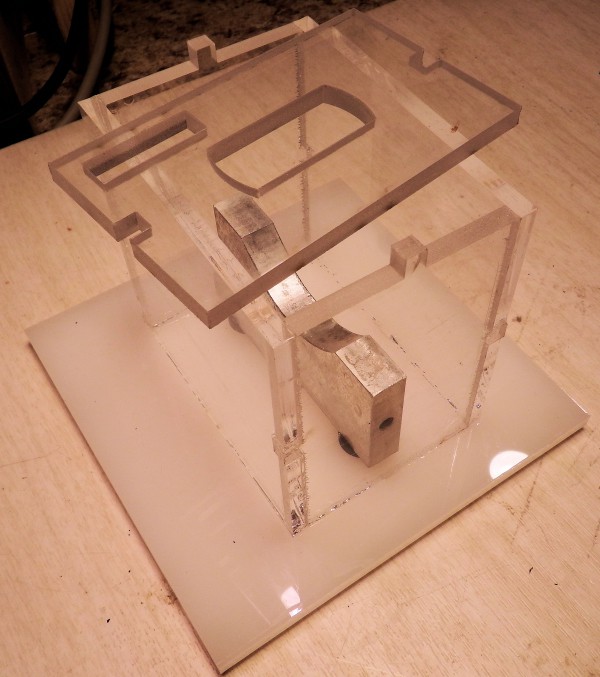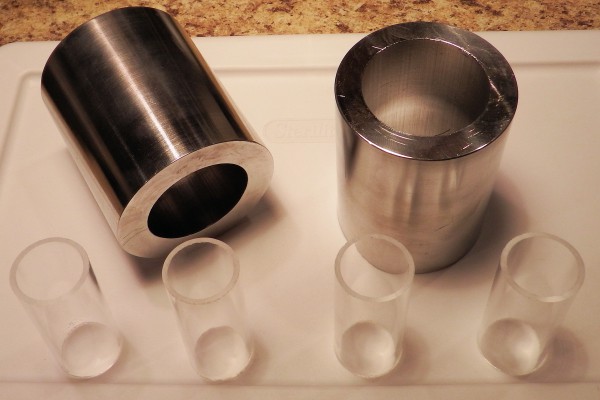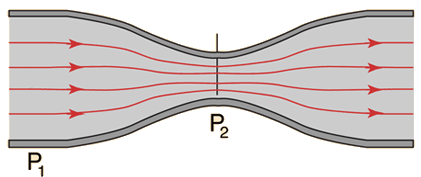Summary
- Project vacation is over
- Diary-style blogs are an interesting motivational technique
- Original reaction chamber doesn't work as hoped
- Three new chamber designs in the works
- Some new "secret sauce" things to try
- Looking into bubble-sonoluminescence
Vacation is over
As mentioned in a previous blog, I took a month vacation from the project to decompress. Keeping up with the Hackaday prize was good in that it held me to a schedule, but bad because the schedule tended to overrule my quality of life.
Future blog posts will come less frequently - I'm hoping for one a month from now on.
Public blogging as a motivational technique
As a scientist-type I'm used to keeping a notebook of experiments, calculations and whatnot. I didn't see the value of this until I actually started doing it - and now I can't imagine doing anything without it. I actually keep 3 notebooks for different categories of my studies: one for the Haber thing, one for tool development, and one for all other projects. Now that I'm doing it, the psychological/motivational benefits of notebook'ing are obvious.
I've come to wonder if keeping an online "diary" has similar benefits. Here I am writing "dear diary" updates, knowing that 111 people are interested enough to follow my progress and 51 thought it was worthy of a skull.
Putting yourself in front of people like that has to have an effect on motivation.
Most science is done in a lab by individuals, and the only others who know what's happening are the lead scientist and perhaps a few team members. The world only finds out when results are published, and if the experiments fail it's not all that embarrassing.
With the internet we have the opportunity for "performance" science, where a researcher does his thing in front of an audience, and has to show results or get boo'ed off the stage.
As an added extra, if the audience can throw suggestions and comments at the researcher, answering and defending against objections would more clearly crystallize the concepts in the researcher's mind.
It's an interesting situation.
I think I'll continue with the diary-style blogs for awhile and see where it leads.
As mentioned previously, I expect to be looking into the Haber process for the next couple of years, so this will be an (anecdotal) "experiment-within-an-experiment".
Reaction chamber doesn't work as hoped

After much fiddling with bubbles in the reaction chamber, I've concluded that the chamber is not a good design. Currents and eddys within the liquid make it impractical to hold a bubble in the right place.
The instability is probably due to having an area of focused energy surrounded by a chaotic buffer area. The transducer horn makes a focused rectangular "duct" of pressure within the water, but areas outside the duct are free to flow. This causes currents and eddies which are large enough to grab any bubble and throw it around the chamber willy-nilly.
So for the next step I'm making new chambers.
Three new chambers in the works
One chamber will be acrylic in the shape of the focused duct, with no outside areas to swirl around. Basically, a rectangular chamber with the same profile as the (rectangular) horn end.

For the second design, I found a pair of Aluminum cylinders at the scrapyard and turned down the inner diameters to the size and shape of the transducer 1:1 horn.
When filled with water, the cylinders should make a resonance chamber in the form used by researchers. This should let me reproduce experiments from published research.
The advantage of this type of chamber is that it's easy to tune: simply raise or lower the transducer until the chamber acoustics match the transducer.
The disadvantage is that you can't see directly into the chamber. I can probably get around this by mounting the chamber on a glass plate and looking through the bottom. A future post will tell whether this works or not.
(This might also be an advantage. Opaque sides would eliminate ambient light - making it easy to detect and/or photograph things going on in the chamber. More on this later.)
I also bought some polycarbonate tubes for use as reaction chambers. I chose polycarbonate over acrylic because acrylic tends to shatter when stressed, while polycarbonate tends to deform.
Also, polycarbonate has a glass-transition temperature of about 150 C, so it should be shapeable using a heat gun. The plan is to mount the tubes in the lathe at slow RPM, soften the plastic with a heat gun, and "encourage" the tube to form an hourglass configuration.

According to Bernoulli's law, the energy at the transducer interface should be the same as the energy at the hourglass restriction. Pressure is energy per volume, so if the "waist" is 1/10 the diameter of the ends, the water should have the same energy in 1/100 of the volume, for a resulting 100x increase in pressure. (Assuming resonance conditions; ie - little or no flow through the restriction, and ignoring potential energy from the head of water above the restriction.)
With a water inlet on one end and an outlet on the other, it might be possible to force bubbles through the hourglass restriction, encountering the 100x pressure magnification along the way.
Brief notes
a) I've got some ideas for an improved driver board. Hardware (read: electronics) has arrived, perhaps by this time next year I'll have a board I'm actually happy with.
b) I've got some new "secret sauce" things to try, to be described at a later date...
c) I was planning a post which goes into more depth on the technical aspects of sonoluminescence bubbles, but the 'damn Hackaday.io system borks all my latex equations. Including equations entered into previous logs.
This is apparently a bug in their system... I think I'll wait until this is fixed.
 Peter Walsh
Peter Walsh
Discussions
Become a Hackaday.io Member
Create an account to leave a comment. Already have an account? Log In.